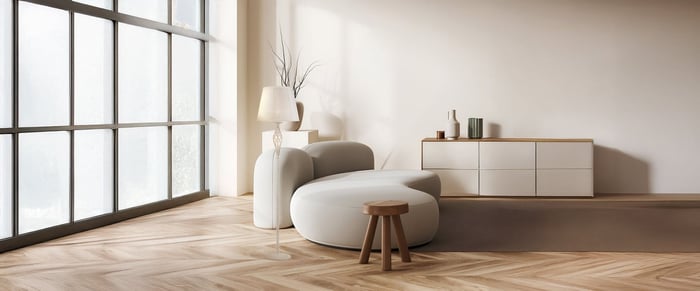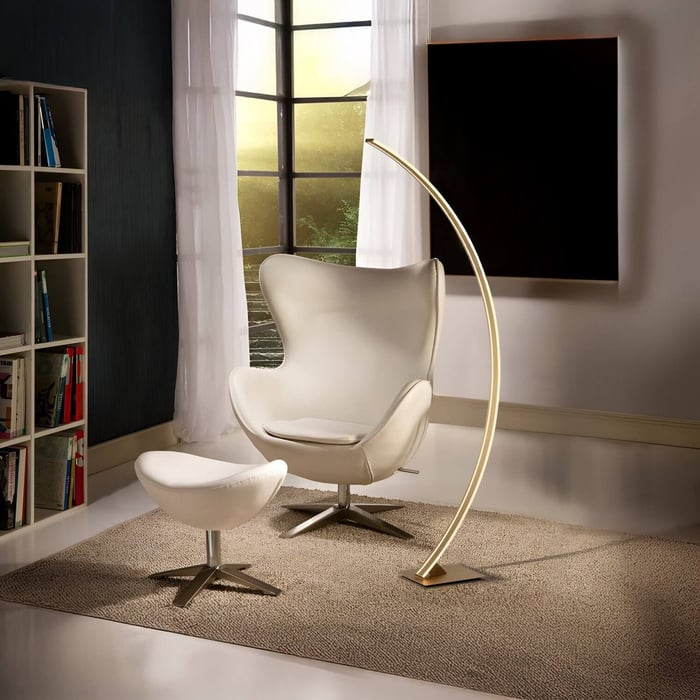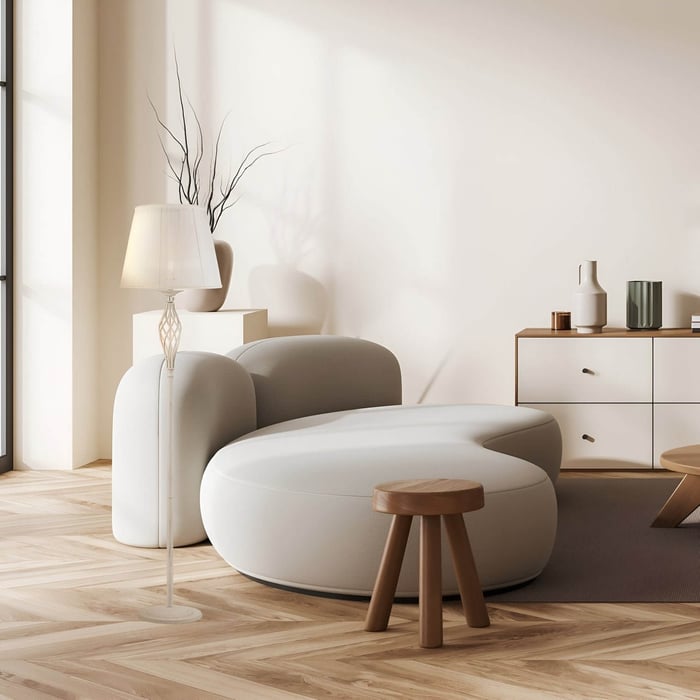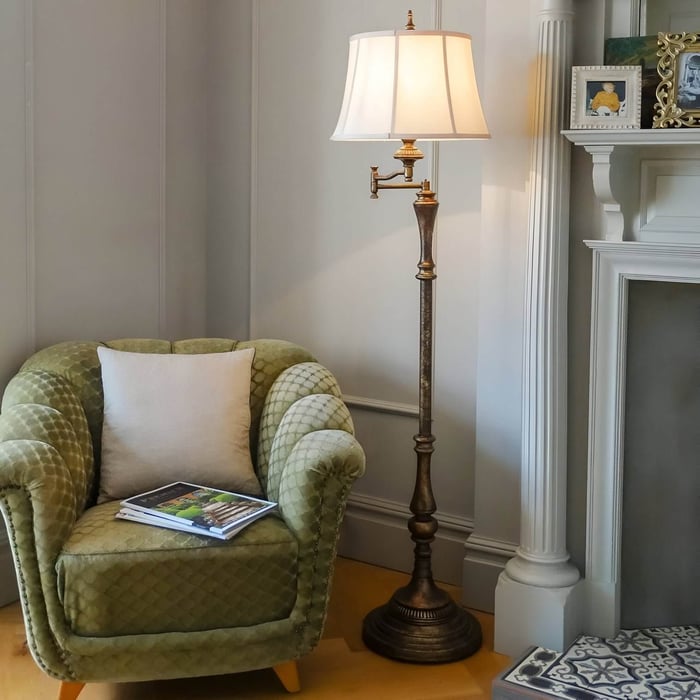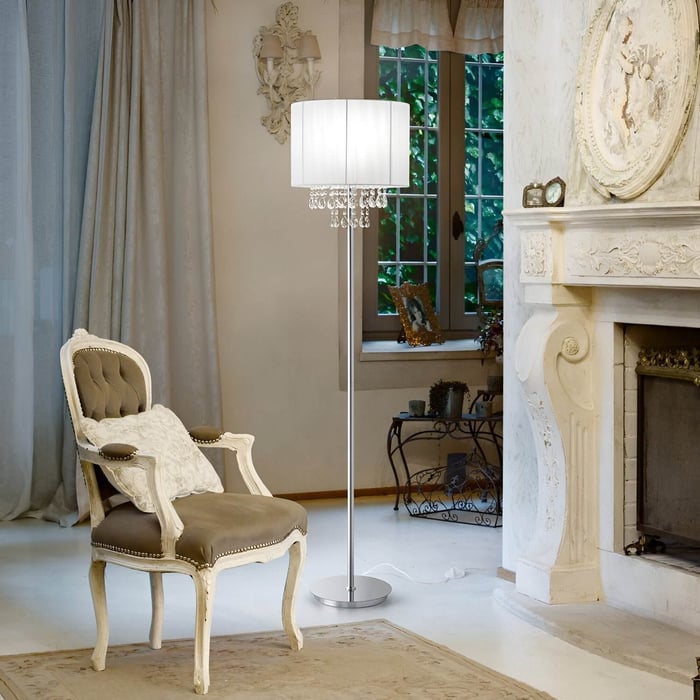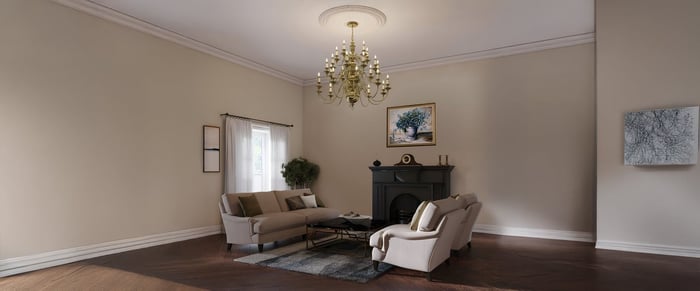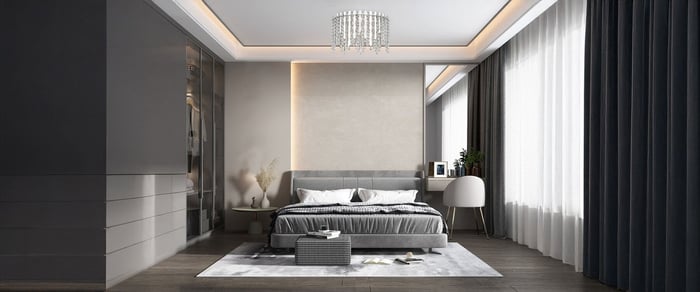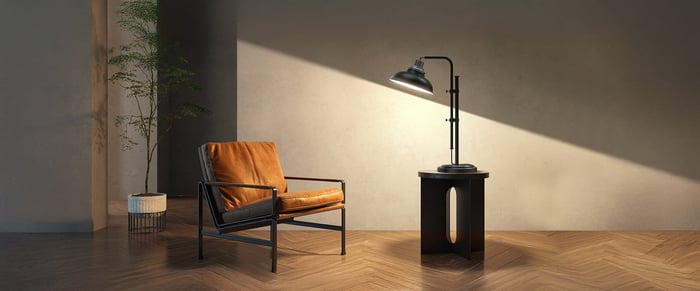Table of Contents
- Introduction
- Understanding Traditional Floor Lamps
- Understanding Modern Floor Lamps
- Comparison: Traditional vs Modern Floor Lamps
- Form: Shape, Silhouette & Visual Weight
- Finish: Material, Colour & Texture
- Function: Direction, Control & Illumination
- Versatility: Where Each Style Works Best
- Hybrid & Transitional Designs: The Best of Both
- Best for You If…
-
- Conclusion: Style Meets Function
- FAQs
Introduction
When it comes to choosing floor lighting, the decision often starts with style. Traditional floor lamps and modern alternatives represent two distinct aesthetics, each bringing its own atmosphere, functionality, and visual weight to a space. Whether you're styling a cozy study, an open-plan lounge, or a compact bedroom, your choice between these styles affects everything from the room’s mood to its layout.
In this guide, we break down the core differences between traditional floor lamps and modern floor lamps across four essential categories: form, finish, function, and versatility. By the end, you'll know exactly which design direction best fits your interior, and where hybrid options might offer the best of both worlds.
Understanding Traditional Floor Lamps
Traditional floor lamps are rooted in classic design principles. Inspired by historic furniture and architecture, these lamps typically feature rounded silhouettes, ornamental details, and materials with a sense of age or craftsmanship.
You’ll often see:
Turned wood or antique-look metal bases
Metal or stained glass shades
Decorative pull chains or twist switches
Symmetrical, balanced forms that feel grounded and timeless
These lamps work beautifully in rooms that value texture, history, and warmth, such as period homes, traditional living rooms, or layered eclectic spaces.
Understanding Modern Floor Lamps
In contrast, modern floor lamps prioritize simplicity and function. Stemming from 20th-century modernism and Scandinavian design, these lamps often feature clean lines, geometric shapes, and minimal ornamentation.
Common characteristics include:
Slim metal or composite frames
Exposed bulbs or integrated LEDs
Touch-sensitive dimmers or remote controls
Architectural shapes like arcs, tubes, or tripod legs
Modern styles are ideal for interiors that embrace minimalism, industrial influence, or open-plan layouts with clean sightlines.
Comparison: Traditional vs Modern Floor Lamps
Traditional Floor Lamps
Form: Sculptural curves, detailed stems, balanced proportions
Finish: Warm tones (brass, bronze, wood), textured or patinated surfaces
Function: Ambient or diffuse light, pull chain or rotary controls
Versatility: Great for classic interiors, libraries, cozy corners
Modern Floor Lamps
Form: Clean lines, geometric shapes, abstract profiles
Finish: Cool tones (chrome, matte black), sleek or uniform finishes
Function: Directional light, touch dimmers, remote or app control
Versatility: Best for minimal, industrial, or contemporary spaces
Form: Shape, Silhouette & Visual Weight
Traditional floor lamps often echo the proportions of classical architecture and furniture. Think of the lamp as a freestanding column: it begins with a broad, stabilizing base, rises through a sculpted or turned stem, and culminates in a flared or fabric-shaded top. This structured vertical silhouette adds elegance and a sense of rhythm to interior layouts.
These forms provide visual softness, especially when used to counterbalance heavy architectural detailing, such as cornices, dado rails, or coffered ceilings. In rooms filled with ornate mirrors, deep upholstery, and antique casegoods, a well-chosen floor lamp can ground the scene without adding visual weight. The curvature of a turned wood or brass stem, for example, complements tufted seating or decorative mouldings while keeping the eye moving gently upward.
In more symmetrical layouts, traditional floor lamps can be used in pairs to frame a fireplace, console table, or built-in bookcase. When used asymmetrically, they create a more relaxed, salon-like atmosphere, particularly in spaces with layered fabrics and tonal variation.
Ultimately, the form of a floor lamp should echo the geometry of its surroundings, whether mirroring the arc of a doorway or the vertical thrust of a mantelpiece, bringing cohesion to richly detailed rooms.
Finish: Material, Colour & Texture
Finish plays a critical role in how a floor lamp complements surrounding furniture and decor. Traditional designs typically feature warmer finishes, antique brass, aged bronze, carved wood, or stained glass shades. These materials feel rich, tactile, and storied.
In contrast, modern floor lamps often use high-contrast or cool finishes: matte black, polished chrome, white powder-coated steel, or frosted acrylic. These materials support a more streamlined, futuristic aesthetic.
Tip: Pair traditional finishes with textured fabrics, rugs, and layered lighting. Pair modern finishes with flat surfaces like concrete, glass, or lacquer.
Function: Direction, Control & Illumination
Traditional floor lamps usually provide ambient or diffuse lighting. Shades direct the light upward (torchiere style) or softly downward over a seating area. Many rely on rotary knobs or pull chains, which offer charm but limited control.
Modern lamps tend to emphasize task or directional lighting, great for reading or focused zones. They often include dimmable features, adjustable heads, or smart home integration (e.g. Alexa or app control).
Tip: Use traditional lamps in spaces where soft ambience is the goal, like living rooms or reading corners. Choose modern lamps where directional light or dimming control is important, like home offices or multipurpose rooms.
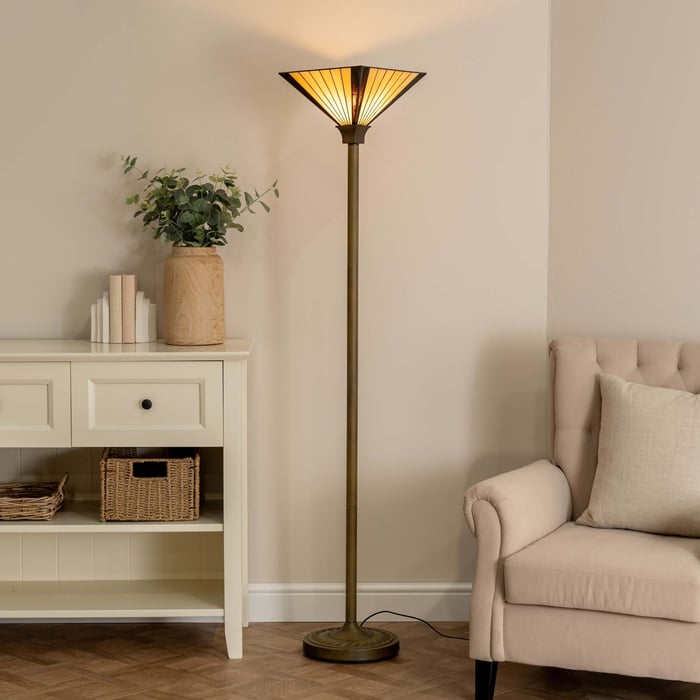
Versatility: Where Each Style Works Best
Both styles have strengths, but where they work best depends on your room layout and broader decor scheme.
Traditional Floor Lamps
Best suited for rooms with architectural details (mouldings, fireplaces, ornate furniture)
Ideal for classic living rooms, bedrooms with heritage styling, or formal dining rooms
Adds visual warmth and layers of interest in rooms with vintage rugs, panelled walls, or curved furniture
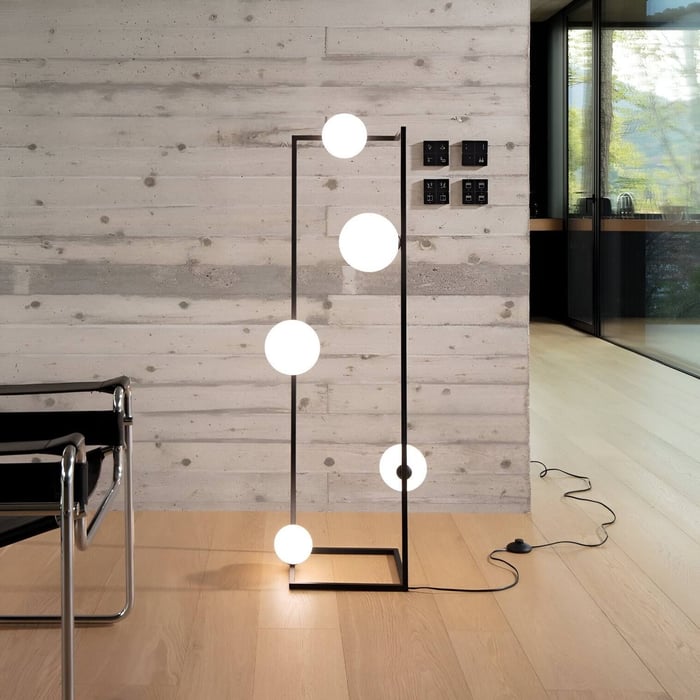
Modern Floor Lamps
Perfect for open-plan spaces with clean lines and minimal detail
Complements mid-century, industrial, or minimalist interiors
Works well in tight spaces where visual clutter must be minimized
Tip: Don’t just match your lamp to your decor. Consider the lamp's visual temperature (warm vs cool), lighting role (ambient vs task), and its interaction with furniture.
Hybrid & Transitional Designs: The Best of Both
For those who find themselves torn between eras, transitional floor lamps offer a compelling middle ground. These designs might feature a traditional drum shade atop a modern tripod base, or a sleek metal form in a warm brass finish.
Transitional styles are growing in popularity for good reason:
They complement both old and new elements in a room
They can be repurposed across evolving design schemes
They often offer modern lighting controls in heritage silhouettes
Example: A floor lamp with a clear glass base, linen shade, and brushed gold hardware. It feels warm and classic but functions with modern efficiency.
Best for You If…
Traditional Floor Lamps
You want to add visual warmth and classic charm
Your space features wood furniture, patterned rugs, or architectural detail
You prefer a cozy, layered feel in living areas
You want timeless style over tech-forward functionality
Modern Floor Lamps
You favor minimal, open-plan, or urban interiors
You want dimmable, directional, or smart-enabled lighting
You prefer clean shapes that blend into the background
You want an efficient, low-maintenance lighting solution
Conclusion: Style Meets Function
Ultimately, the choice between traditional floor lamps and modern styles comes down to your design priorities. Do you value warmth, texture, and timelessness, or are you drawn to simplicity, functionality, and architectural clarity?
Each style offers unique strengths:
Traditional lamps bring character, softness, and visual balance to rich interiors.
Modern lamps offer precision, minimalism, and cutting-edge lighting control.
And for those with mixed preferences, transitional floor lamps provide flexibility, bridging the gap with ease.
FAQs
1. What is the difference between traditional and modern floor lamps?
Traditional floor lamps feature ornate designs, curved silhouettes, and warm finishes like brass or wood. Modern floor lamps have clean lines, minimal forms, and cooler finishes such as matte black or chrome. They also differ in lighting control, with modern styles often offering dimming or smart features.
2. Are traditional floor lamps still in style?
Yes. Traditional floor lamps remain popular for their timeless appeal and ability to add warmth and texture to interiors. They're especially favored in classic, vintage, transitional, or eclectic home styles.
3. Can I mix traditional floor lamps with modern furniture?
Absolutely. Blending traditional lighting with modern furniture can create a balanced, layered look. Choose finishes or silhouettes that echo other elements in the room to create cohesion.
4. Which type of floor lamp is better for reading?
Modern floor lamps often offer directional heads and adjustable brightness, making them more functional for focused tasks like reading. However, some traditional styles with downward-facing shades can work just as well in cozy reading nooks.
5. What rooms are best suited for traditional floor lamps?
Traditional floor lamps work well in living rooms, bedrooms, libraries, and formal sitting areas—especially in homes with heritage design features or layered, textured decor schemes.
